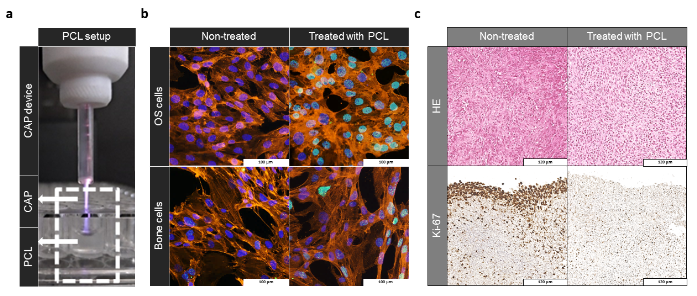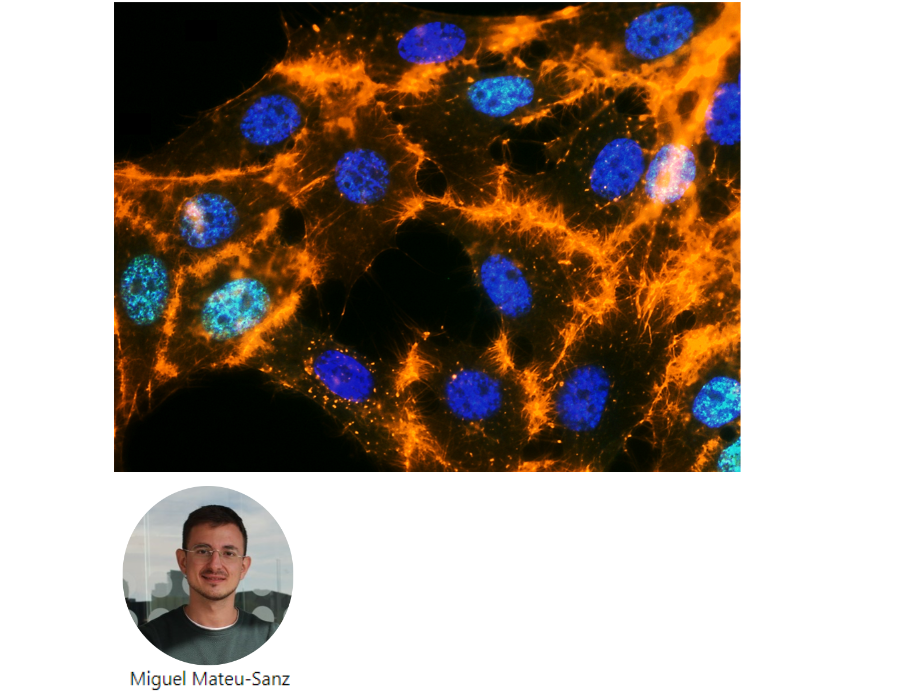
Miguel Mateu-Sanz1,2,3, Juan Tornín1,2,3, Bénédicte Brulin4, Anna Khlyustova1,2,3, Maria-Pau Ginebra1,2,3,5, Pierre Layrolle4 and Cristina Canal1,2,3
1 Biomaterials, Biomechanics and Tissue Engineering Group, Department Materials Science and Metallurgy, Technical University of Catalonia (UPC), Escola d’Enginyeria Barcelona Est (EEBE), c/Eduard Maristany 14, 08019 Barcelona, Spain
2 Barcelona Research Center in Multiscale Science and Engineering, UPC, 08019 Barcelona, Spain
3 Research Centre for Biomedical Engineering (CREB), UPC, 08019 Barcelona, Spain
4 Inserm, UMR 1238, PHY-OS, Laboratory of Bone Sarcomas and Remodeling of Calcified Tissues, Faculty of Medicine, University of Nantes, 44035 Nantes, France
5 Institute for Bioengineering of Catalonia (IBEC), Barcelona Institute of Science and Technology (BIST), c/Baldiri i Reixach 10-12, 08028 Barcelona, Spain
Cold Plasma-Treated Ringer’s Saline: A Weapon to Target Osteosarcoma
Osteosarcoma (OS) is the most common type of bone tumor which appears in long bones and mainly affects children, adolescents and young adults. Despite its low incidence, it is ranked among the most frequent cause of cancer-related death in child. Current therapy for OS consist in surgical resection of the tumor, combined with chemotherapy or radiation, but patient survival still remains relatively low (50-60%) and it is associated with systemic toxicity and side effects. For these reasons, innovative anti-cancer therapies are of interest.
Cold atmospheric plasmas (CAP) are a highly reactive state of the matter that can be created by applying an electrical discharge to a gas. CAP are a source of reactive molecules, UV and electromagnetic fields that can be employed for different biomedical purposes, like antimicrobial sterilization and wound healing. Recently, CAP have also been suggested to target a wide range cancer cells without damaging healthy cells and tissues.
Among the different components of CAP, the reactive oxygen and nitrogen species (RONS), like OH–, O2–, H2O2, NO, NO2– and ONOO–, are the main responsible of their biological effects. RONS are able to induce a wide range of effects depending on the characteristics of the targeted cell type. Contrarily, cancer cells and bacteria possess higher level of RONS and reduced antioxidant ability than healthy cells, so CAP can selectively damage cancer cell structures and produce cell death. These effects also depend on the treatment time with CAP; short treatment with CAP may have negligible effects but long treatment times may damage both cancer and healthy cells.
Due to the main role of RONS on CAP effects, CAP can be employed directly to treat cells and tumor tissues or can be used to produce this RONS in carrier liquids, known as Plasma Conditioned Liquids (PCL). This second approach is more interesting for tumors located inside the body like OS, as these RONS can be supplied by local injection of the PCL and in repeated doses, avoiding a surgical intervention to expose the tumor to the CAP device.
In this study, we employed as Ringer’s saline, a saline solution already employed in hospitals, to produce RONS by treatment with CAP and exposed OS cells and healthy bone cells to them to compare the effects on each type of cells. For that, first we evaluated the cell viability, the increase of intracellular ROS and induction of DNA damage in both type of cells. Then, we quantified the amount of two representative RONS, H2O2 and NO2– produced in Ringer’s saline to be able to corelate the RONS production with the induced effects. Finally, we produced OS tumors in mice and we evaluate the cytotoxic effect of PCL in sections of tumor tissues.
By the use of PCL, we were able to induce a reduction on cell viability in OS cell cultures after 24 hours of treatment, which was proportional with the treatment time of PCL, and being even higher after 72 hours. In contrast, healthy bone cells were not affected by short treatment times of PCL after 24 hours, although they decreased their cell viability with longer treatment times of PCL. These effects were related with the amount of H2O2 and NO2– in PCL, that increased with the treatment time. PCL could induce higher intracellular RONS in both cell types, but being much higher in OS cells than in non-malignant bone cells. As consequence of this, higher levels of DNA damage were observed in OS cells rather than in healthy bone cells.
Finally, by studying tumor tissues, we observed a decrease on tumor cell proliferation by the PCL treatment.
Our data show that PCL could be used for the selective treatment of OS without damaging healthy tissues and thus avoiding side-effects: First, PCL induces cell death in OS cell cultures, related to the increase in the intracellular ROS that triggers DNA damage, with significantly less effect in healthy bone cells. Second, PCL reduces cell proliferation in tumor tissues. Although further investigations are needed, the results of the present work provide evidence of PCL as a promising tool for OS treatment.

Selective effects of PCL against OS. a) CAP jet during the production of PCL. b) Immunostaining of DNA damage (green) induced in cell nuclei (blue) and staining of the cytoskeleton (orange) determined in non-treated and PCL-treated OS and healthy bone cells. c) Hematoxylin/eosin staining and immunostaining of Ki-67 (proliferation marker) in non-treated and PCL-treated OS tumor sections.



